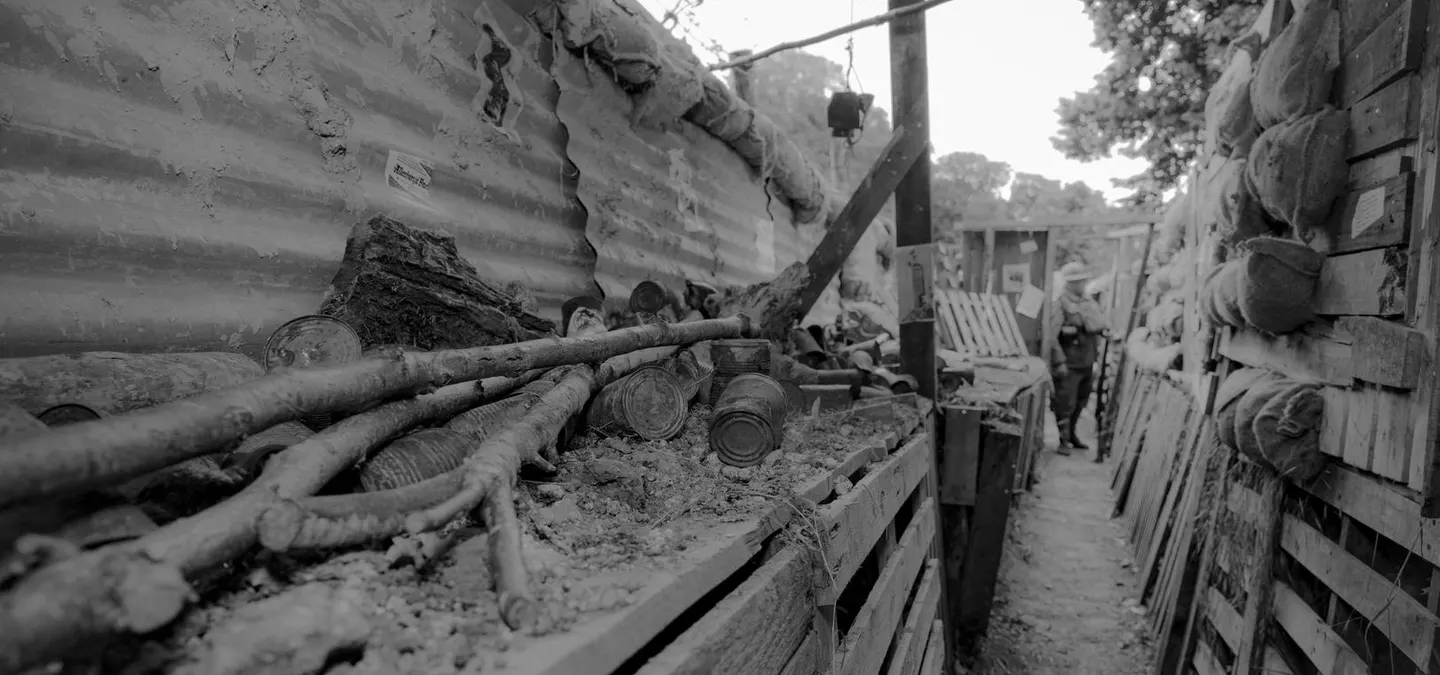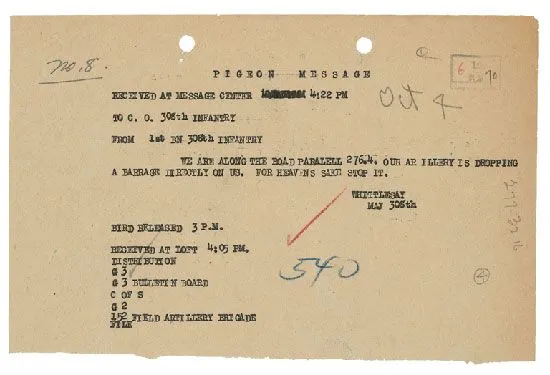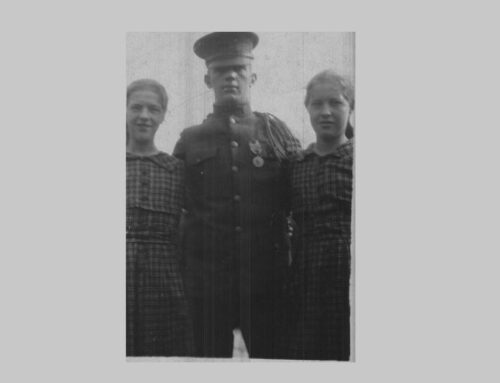A Biologist Tells The Story Of ‘Cher Ami’—The World’s Most Famous War Pigeon
Published: 4 January 2025
By Scott Travers
via the Forbes Magazine website

Trench in Argonne Forest
In the fall of 1918, hundreds of U.S. infantrymen found themselves surrounded by German forces in northern France’s Argonne Forest. Here’s the incredible story of how they managed to survive. (Getty)
World War I was a time of great military advancement. New to the battlefield were impressive inventions such as armored tanks, machine guns, airplanes, submarines and field telephones.
But the armies of WWI weren’t entirely modernized–they still found utility in the old way of doing things. Perhaps the clearest example of this comes from the story of “Cher Ami,” the legendary messenger pigeon that changed the fortunes of an entire American battalion by delivering the famous message:
“We are along the road parallel to 276.4. Our own artillery is dropping a barrage directly on us. For heavens sake stop it.”
How Cher Ami Saved The ‘Lost Battalion’
Cher Ami was a male homing pigeon born in the spring of 1918 in Norfolk, England. He was one of 600 English-bred messenger pigeons donated to America’s Signal Pigeon Corps—a unit of the U.S Army charged with training and deploying homing pigeons for communication and reconnaissance purposes.
In September of 1918, Cher Ami was among 60 pigeons assigned to support communication efforts of the U.S.’ 77th Infantry Division who were fighting the Germans in the Argonne Forest of northeastern France.
Fate was not kind to the Division—in October, 1918, more than 550 men found themselves trapped behind enemy lines without food or ammunition. The Division’s leader, Major Charles Whittlesey, attempted to send runners to alert allied forces of their desperate position, but they were consistently intercepted by the surrounding Germans. Because allies were unaware of their position behind enemy lines, the Division faced attacks from the Germans as well as an increasing onslaught of friendly fire.
Whittlesey also attempted to alert allies of their position via homing pigeons. One pigeon, carrying the message “Many wounded. We cannot evacuate.” was shot down by the Germans. Other pigeons were stymied in their attempt to sound the alarm.
Cher Ami, however, managed to make it through—though not without taking his licks (the pigeon was shot in the chest and the leg, and lost an eye). One hundred and ninety-four infantrymen were saved due to the instinctual acts of Cher Ami.
Cher Ami was treated as a hero and Army medics worked to save his life. Unfortunately, his wounds were too grave and he died less than a year later in Fort Monmouth, New Jersey. His stuffed body is on display at the Smithsonian Institute in Washington D.C.
DNA Analysis Of History’s Most Famous Pigeon
A hundred years later, in 2021, researchers at the National Museum of Natural History and Smithsonian National Zoo used modern DNA analysis to learn more about the famous war pigeon.
Taking tissue samples from the stub of Cher Ami’s right leg (which had been amputated due to German fire) and the underside of Cher Ami’s left rear toe pad, the researchers were able to determine that the bird was indeed a male, as had been theorized.
→ Read the entire article on the Forbes website.
External Web Site Notice: This page contains information directly presented from an external source. The terms and conditions of this page may not be the same as those of this website. Click here to read the full disclaimer notice for external web sites. Thank you.





